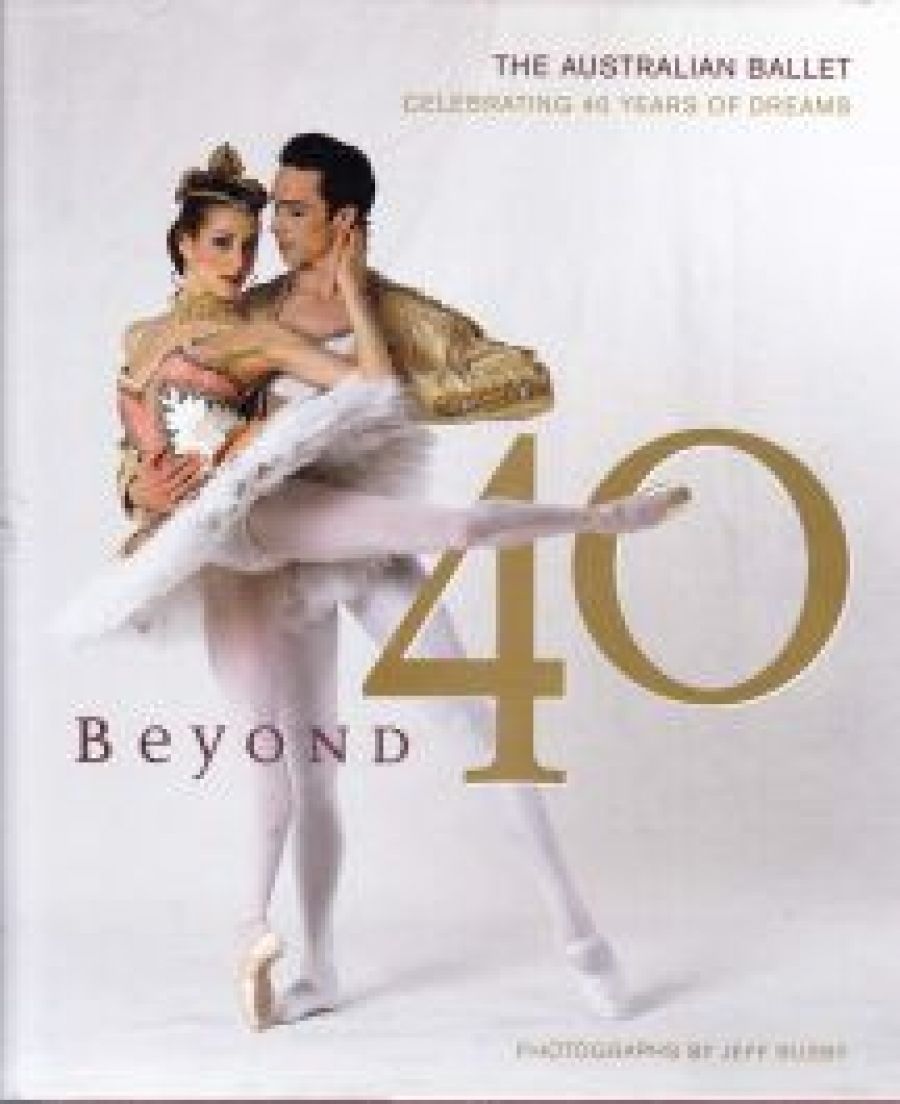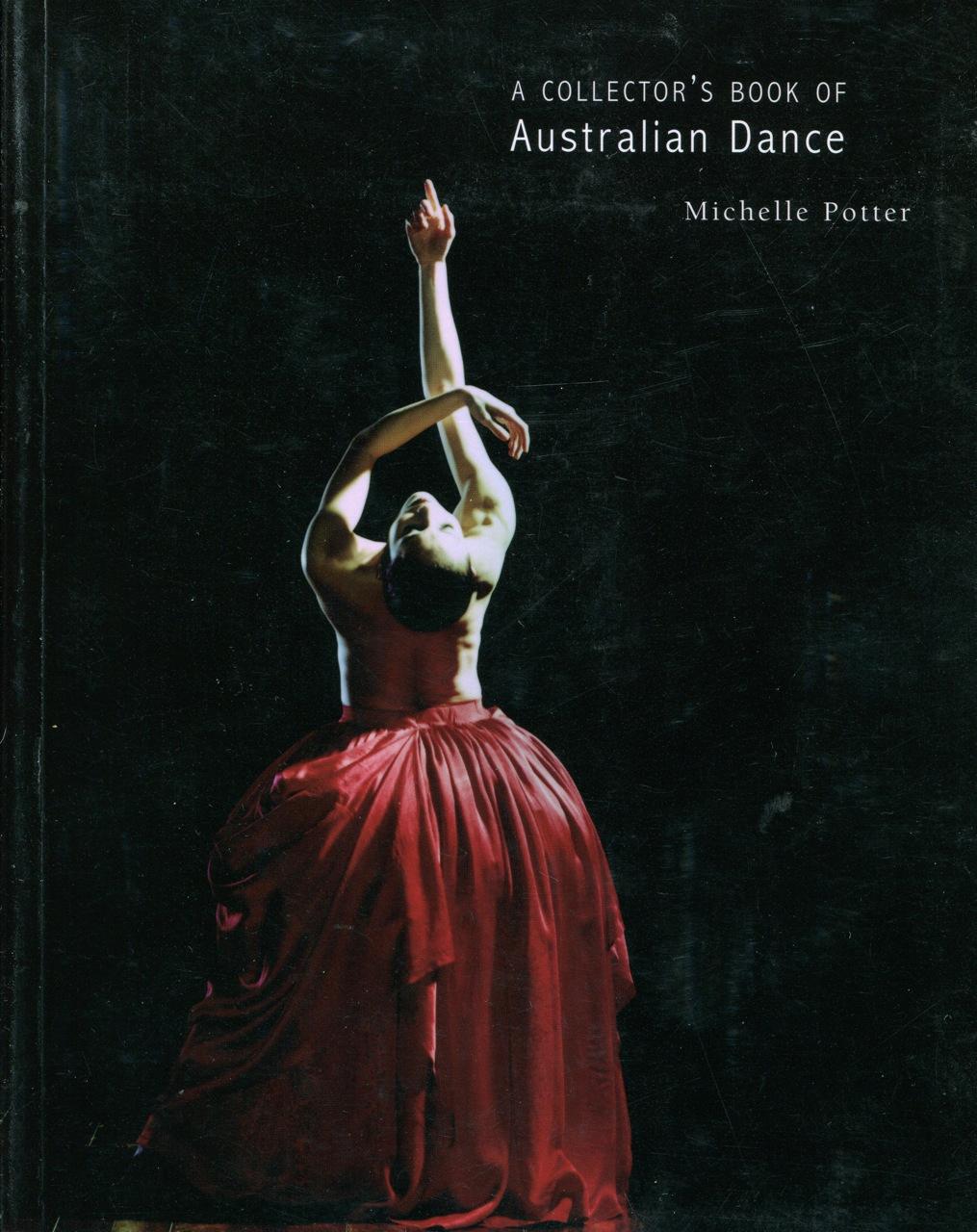
- Free Article: No
- Contents Category: Dance
- Review Article: Yes
- Article Title: No stopping
- Online Only: No
- Custom Highlight Text:
Here are two sumptuously produced keepsakes serving very different purposes. Beyond 40 describes itself as ‘Forty Years of Dreams’, but actually offers one year’s worth of images that the Australian Ballet want to project. A Collector’s Book of Australian Dance, on the other hand, for all its unintoxicating title, comes much closer to being a book of dreamings.
- Book 1 Title: Beyond 40
- Book 1 Subtitle: Celebrating 40 years of dreams
- Book 1 Biblio: ABC Books, $49.95 hb, 144 pp
- Book 2 Title: A Collector's Book of Australian Dance
- Book 2 Biblio: National Library of Australia, $19.95 pb, 120 pp
- Book 2 Cover Small (400 x 600):

Taken as a whole, the company looks as if its dancers are pretending to be themselves, acting with might and main. How strenuously the courtesans courtesanise in Manon, how undistractedly the card-players play their cards. Even the walnut table around which they gather is proud to make its appearance – witness its British Antique Dealers’ Seal plumb in the centre of the shot. In a further doomed attempt at authenticity, a clutch of youngsters in swimsuits is stationed on Geelong beach to convey what Meryl Tankard’s The Deep End might have been like. Naturally, when performers are lifted out of their performance space, they look like impostors, as when poor Madeleine Eastoe is sent to pose amidst tree-ferns in the hope that this will re-create Sidney Nolan’s vision of The Display. It doesn’t. Even Jeff Busby’s splendid photographs of white-faced vampire brides record not a Giselle that the company has yet produced, but a very good idea for a production that someone really should mount.
Arranged in no discernible order, pretty-prettied, and lacking production details, Beyond 40 is a full-colour advertisement for the Australian Ballet, not a record of its four decades. That opportunity passed while the dancers smiled into the lens.
At less than half the price, Michelle Potter’s A Collector’s Book of Australian Dance is more than treble the value. On page six – at the height of her leap, higher than you can believe is possible – a woman is poised as if forever. The perpendicular arm completes the diagonal begun by the bent back leg. Front leg and forearm similarly, but differently, balance and counterpoise each other. Her whole body forms a shape as incisive as a scimitar. The most astonishing thing is that she looks at you with complete attention, holding you eye to eye, as if you leaned towards one another across a table in mid-air. Her name is Sarah Peace, and this unchanging instant happened in 1999.
It is, I was going to say, the first of many such instants. But that is not quite true, for where exactly does this book begin and end? The front cover shows an ecstatic figure (Bella Figura: Jiri Kylian); there is then a white page, a black page, and – as if a curtain has risen and we are looking down on the same moment from far away in the gods, through opera glasses or through memory – the image reappears, smaller. It makes another comeback, differently sized again, before the final pages of information, after which the volume closes with one of its most onward-moving images, that of Bradford Leeon in Nanette Hassall’s Windprints. There is no stopping the dance.
Between these covers, therefore, is a selection of photographs that you wish could go on forever. Well, in fact they do. These men and women – Maina Gielgud bent double and almost locked into fifth position (Squeaky Door, 1974), or Martin Rubinstein insouciantly proposing himself (Le Beau Danube, 1946) – are immortal, partly because they are so thoroughly of their time. So are the photographers: by capturing her stillness rather than her motion, Harold Cazneaux’s picture of Pavlova makes use of what the camera in 1926 could not do; in 1999, responding to the new things that it could achieve, Greg Barrett could launch Timothy Harbour and Marc Cassidy into a flight-duet of virtuoso deadpan comedy. Audiences have always seen marvels on the stage; the camera’s vision at 1/2000th of a second simply allows us to continue gazing at them.
It took remarkable men and women behind the machine, as well as in its sight line, to create these images. Through the plates and brief biographies in Potter’s introduction, the Collector’s Book movingly commemorates both parties. By its subtle arrangement of material – ‘people’, ‘portraits’, ‘process’ etc. – it concentrates attention while declining to fix it in hard-edged categories. The record shows us how dance in Australia was international before it was national, and then went on to become international again. It reminds us also of the work of many small companies, such as Meryl Tankard’s or Laurel Martyn’s Ballet Victoria, which did new things in Australian theatre, only to be killed off. Here, caught in light on paper, they keep on dancing.


Comments powered by CComment